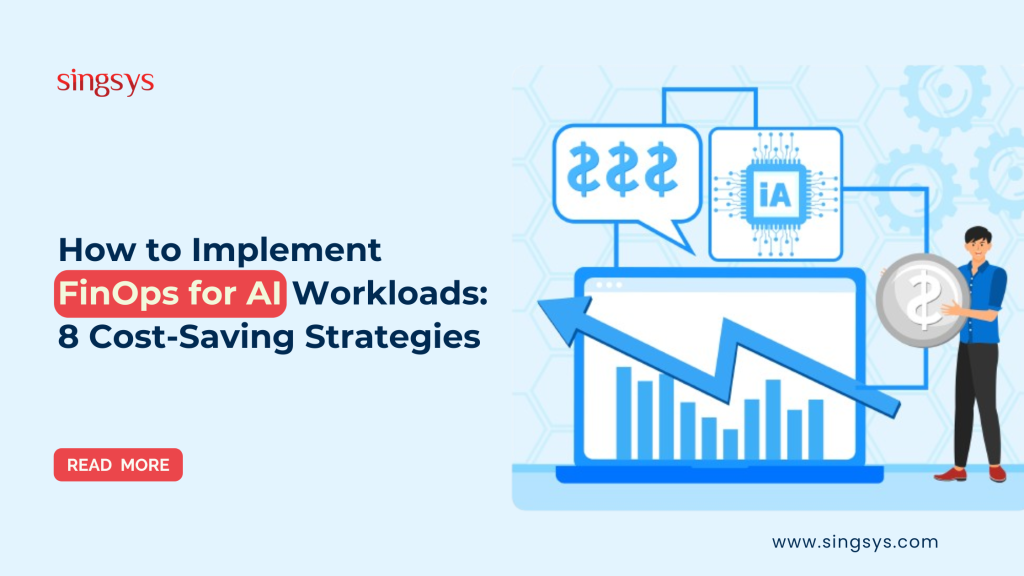Oracle Cloud vs AWS: Which One Should You Choose?
The world of business is constantly evolving, and a major driver of that change is the adoption of cloud computing. The days of buying, installing, and managing your own physical […]

Artificial Intelligence (AI) has quickly become one of the most powerful drivers of innovation across industries—from predictive healthcare and fraud detection to personalised retail experiences and autonomous vehicles. But with great power comes great responsibility—and in this case, significant cloud costs.
Training large AI models, running experiments, and storing massive datasets require substantial computing resources. Without careful planning, expenses can spiral out of control, leaving organisations struggling to justify their AI investments.
This is where FinOps for AI workloads comes in. By blending financial accountability with cloud operations, FinOps helps businesses optimise cloud spending while ensuring teams still get the performance they need.
In this blog, we’ll explore what FinOps means for AI, the challenges of managing costs, and eight proven strategies to save money without slowing innovation.
FinOps (Financial Operations) is a practice that combines finance, operations, and engineering teams to manage and optimise cloud spending effectively. It’s not just about reducing costs—it’s about building a culture of accountability where teams make smarter, cost-conscious decisions.
When applied to AI, FinOps focuses on:
Put simply, FinOps for AI workloads ensures organisations maximise ROI from AI initiatives while avoiding unnecessary overspending.
AI workloads pose unique cost challenges that make FinOps essential:
Without FinOps practices, these challenges can lead to budget overruns and force businesses to scale back innovation.
Not all AI workloads need the largest GPU clusters. Over-provisioning is one of the most common cost leaks.
Rightsizing ensures resources aren’t sitting idle while bills continue to rise.
Cloud providers offer flexible pricing models:
Combining spot and reserved instances balances flexibility with reliability.
Data-heavy AI workloads often bleed money through hidden storage and transfer costs.
Efficient storage management can cut expenses without affecting performance.
AI innovation thrives on experimentation, but costs add up fast.
Encouraging cost-aware experimentation helps teams stay innovative without draining budgets.
Visibility is a cornerstone of FinOps.
Transparency drives accountability and smarter decision-making.
Manual tracking isn’t scalable for AI workloads. Automation ensures discipline:
Automated governance reduces human error and keeps costs predictable.
FinOps isn’t just about tools—it’s a cultural shift.
A strong FinOps culture ensures cost management is everyone’s responsibility.
Leading cloud providers offer specialised AI cost management features:
Leveraging these built-in tools helps automate and streamline optimisation efforts.
Imagine a retail company training AI models for personalised recommendations. Initially, they ran every experiment on top-tier GPUs, stored every dataset in premium storage, and had no visibility into project costs.
By implementing FinOps:
Result? Overall, AI project costs dropped by 50%, freeing up budget for innovation.
AI workloads are exciting but expensive. Without proper oversight, costs can escalate quickly and limit innovation. FinOps offers a practical solution—balancing financial accountability with cloud agility.
By adopting the eight strategies outlined above—rightsizing, leveraging pricing models, optimising storage, and fostering a FinOps culture—organisations can ensure that their AI projects remain cost-efficient, sustainable, and scalable.
The future belongs to businesses that can harness AI powerfully while staying financially smart.
This blog is intended for informational purposes only. While it highlights strategies for managing AI cloud costs, each organisation’s needs may vary. Always consult with cloud providers, FinOps experts, or financial advisors before making cost-related decisions.
FinOps is a practice that combines finance, operations, and engineering teams to manage and optimise cloud spending.
AI workloads are compute- and data-heavy, making them more expensive than traditional applications. FinOps helps manage and reduce these costs.
Yes. Even small teams running AI experiments can save significantly by adopting FinOps practices.
All major providers (AWS, Azure, Google Cloud) offer tools. The best choice depends on workload requirements, budget, and integration needs.
No. Done right, FinOps doesn’t restrict innovation—it ensures resources are used wisely so innovation is sustainable.
Read more blog posts:
Aug 19th, 2025
The world of business is constantly evolving, and a major driver of that change is the adoption of cloud computing. The days of buying, installing, and managing your own physical […]
Apr 30th, 2025
Cloud computing is no longer a future concept—it’s a present-day necessity. As the backbone of digital transformation, cloud services enable businesses to scale faster, operate more efficiently, and enhance security. […]
May 2nd, 2024
Will you be ready for the software development landscape in 2024? Expert insights on the top 15 trends – from VR collaboration to quantum computing – that will shape the future in this forward-looking Developer’s Roadmap.